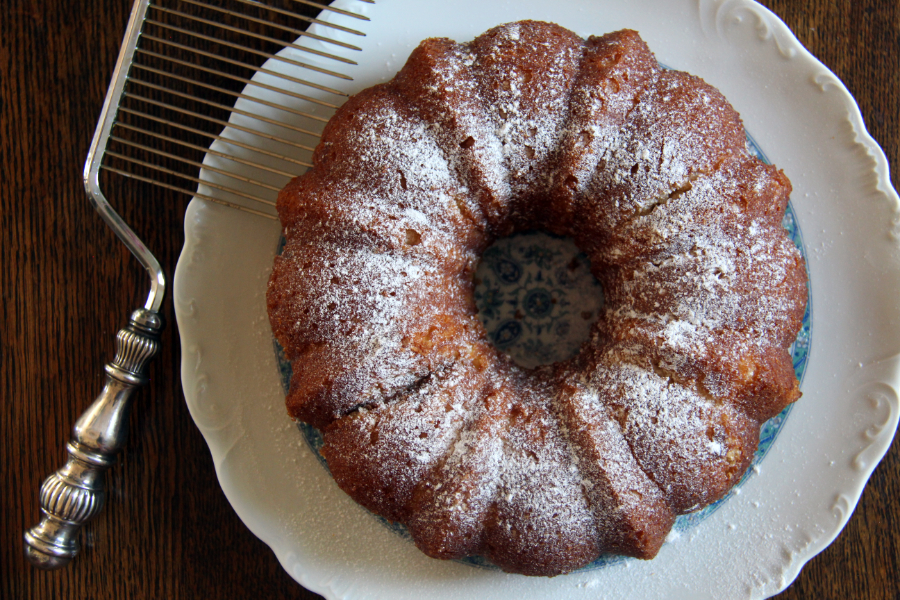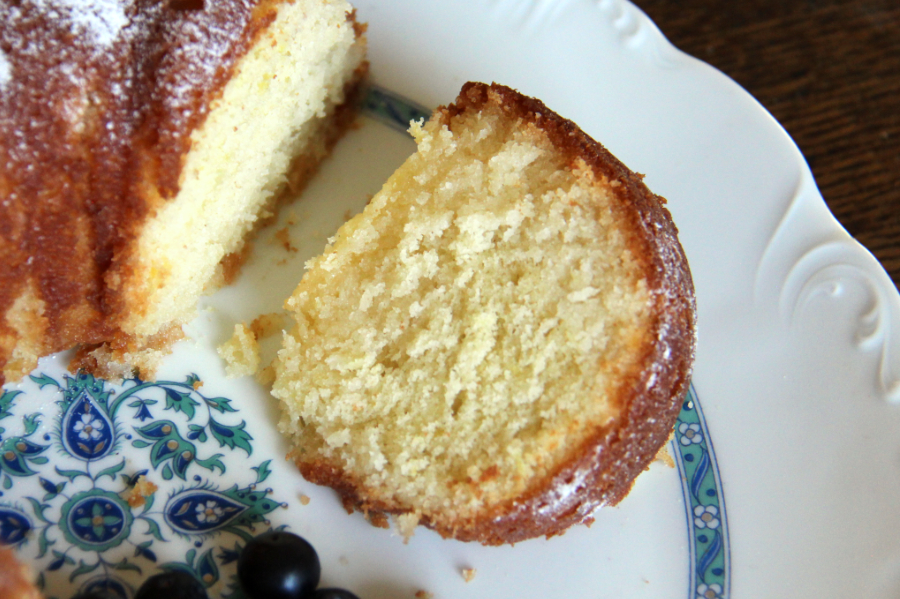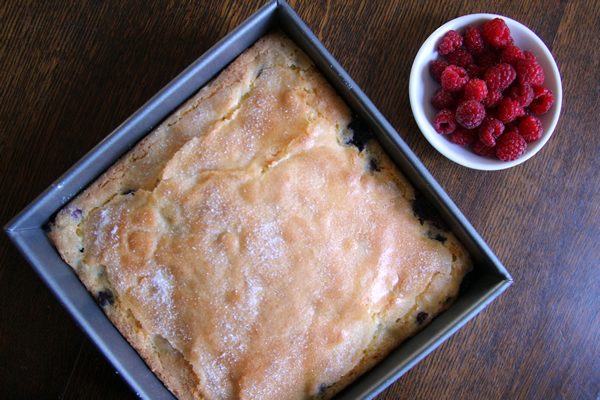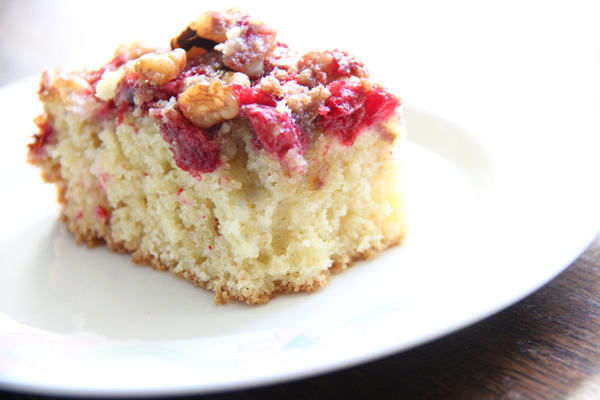When we hiked mountain trails along the Amalfi Coast several years ago, we marveled at the fist-sized lemons hanging off the cliffside trees. We didn’t know at the time, but they were begging to get zested and squeezed into this ultramoist and puckery lemon cake. While this lemon-lover’s dessert comes from the region, it doesn’t require Italian lemons. The supermarket variety will do just fine.
Who knows the real heritage of this cake. It has relatives all over the world. The English call it a “lemon drizzle cake.” It starts out as a classic butter cake—rich, fluffy, golden, and fairly easy to make. The jolt of flavor comes from the lemon syrup that gets poured on after baking and soaks deep into the crumb. It also moistens and sweetens, much like the simple syrup that bakeries infuse into their cakes— a secret ingredient that makes us believe they bake better than we do.
Another drizzle cake we’ve made for years, little lemon buttermilk poppy seed loaves, steals the show at tea or brunch. But this lovely Amalfi bundt cake, with its elegant curves, makes a more dramatic, lemony splash for dessert.
Bakery Secret Ingredient
To dress up the cake, try another bakery secret ingredient.
Professional bakers dust moist cakes, fruit tarts, and even whipped cream with confectioner’s sugar. And yet the sugar never dissolves. How do they keep powdered sugar from disappearing?
For that professional finish, bakeries rely on special non-melting confectioner’s sugar, also known as snow sugar or donut sugar. Slightly less sweet than regular powdered sugar, it consists of harmless dextrose and a little oil or fat. It won’t dissolve even on cold, cut fruit.
So for simple decoration, just dust with non-melting confectioner’s sugar from King Arthur or Amazon. It won’t disappear, even on top of all that syrup. A little goes a long way and lasts a long time.
And if you have a chance, get yourself to Amalfi and admire those giant lemons.
Lemon Bundt Cake, Amalfi-Style
Adapted from Milk Street’s Amalfi-Style Lemon Cake
- 2 cups (428 grams) sugar, divided
- 2 tablespoons grated lemon zest
- ¾ cup lemon juice
- 2 cups (260 grams) all-purpose flour
- 2 teaspoons baking powder
- ½ teaspoon salt
- 14 tablespoons butter (198 grams) (1 stick plus 6 tablespoons), room temperature
- 3 eggs, room temperature
- ½ cup milk
- Non-melting confectioner’s sugar for dusting (optional)
- Preheat oven to 350°. Brush the inside of a 12-cup nonstick Bundt pan with Cake Goop, or use non-stick baking spray such as Baker’s Joy.
- Combine 1 cup of sugar (214 grams) and lemon juice in a small saucepan and cook over medium-high, stirring, until sugar dissolves, about 4 or 5 minutes. Pour into a 2-cup glass measuring cup or small bowl. (It makes about 1¼ cups). Cool and set aside.
- In a medium bowl, whisk together flour, baking powder and salt.
- In a large bowl in stand mixer with the paddle attachment (or using a hand mixer), beat the remaining cup of sugar and the lemon zest on medium until fragrant, 1 to 2 minutes, scraping the bowl once or twice.
- Add butter and beat on medium-high until light and fluffy, scraping the bowl as needed, 3 to 5 minutes. On low speed, add eggs one at a time, beating to combine after each addition and scraping down the bowl as needed. Increase to medium and beat until light and fluffy, about 3 minutes.
- Reduce speed to low and add flour and milk alternately in five steps, starting and ending with flour. Mix until just combined, about 1 minute. Using a spatula, fold the batter a few times to break up any small clumps of flour.
- Scoop the thick batter into the prepared pan and gently smooth and level the surface with a spatula. Bake until golden brown and a tester inserted about 2 inches from the edge comes out clean, 35 to 40 minutes. Cool in the pan on a wire rack for 10 minutes.
- To add syrup: Prick holes all over the top of the cake (about every ½ inch or so) with a cake tester or toothpick, going in as deeply as possible. Slowly pour half of the syrup evenly over the cake. Let stand for about 5 minutes so the syrup can soak in. Slowly pour the rest of the syrup over the cake, then let cool for 30 minutes. Do not try to release early or let the cake sit in the pan for much longer or it might stick. Test around the cake (including the tube) with a thin knife or wire cake tester to see if the cake has stuck anywhere. If so, use the knife or cake tester to loosen it. Invert the cake onto a platter, lift off the pan and cool to room temperature.
- Dust with non-melting confectioner’s sugar to finish, if desired.








